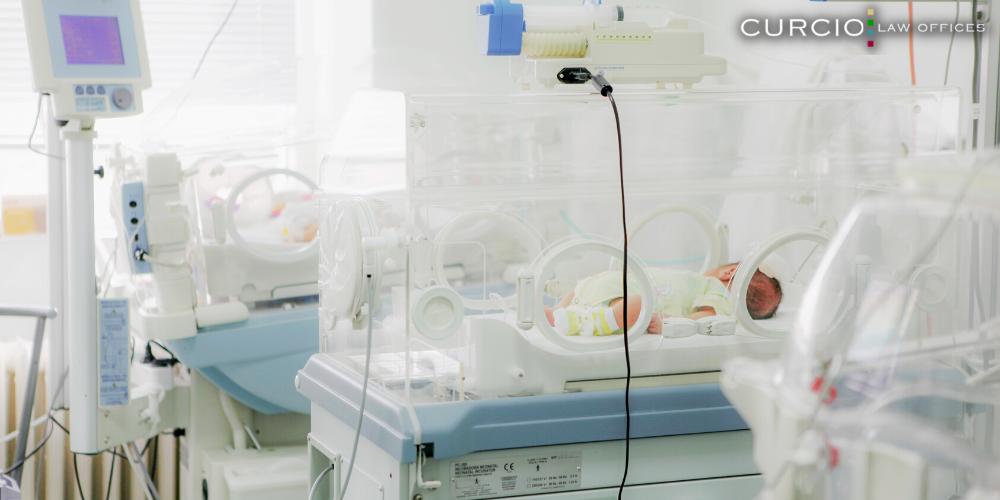CHICAGO CYTOTEC BIRTH INJURY LAWYER
PRACTICE AREAS
Misoprostol Birth Injuries (Cytotec Birth Injuries)
Cytotec is a medication that is most commonly used to treat and prevent stomach ulcers while a patient is taking NSAIDs. At some point, doctors realized that Cytotec could be used for other things too, such as abortion and labor induction because of its cervical ripening effects. However, using Cytotec to induce labor comes with serious risks that can potentially lead to a traumatic birth for both the mother and the baby. For this reason, there is no FDA scientific proof that suggests this medication is a safe labor induction method. Below, we break down the details of Cytotec birth injuries and whether or not you have grounds to sue.
If you or your baby has suffered a major Cytotec birth injury, you may have grounds to file a civil lawsuit in the state of Illinois. Our Chicago medical malpractice attorneys have decades of combined experience in handling both medical malpractice and birth injury cases. You can trust that your Chicago birth injury attorney from Curcio Law Group will fight to obtain justice and appropriate compensation for your suffering.
Call our Chicago birth injury lawyers at 312-321-1111 to schedule a free consultation today.

What is Cytotec?
Cytotec, also known as misoprostol, is a medication that’s mainly used to prevent stomach ulcers while a patient is taking nonsteroidal anti-inflammatory drugs (NSAIDs). The goal is to reduce stomach acid in order to protect the stomach lining, therefore preventing gastric ulcers and possible bleeding. Common Cytotec adverse reactions can include abdominal pain, nausea, vomiting, and diarrhea.
Misoprostol tablets have other uses too. For example, misoprostol can be taken in conjunction with a progesterone blocker called mifepristone to end a pregnancy that is fewer than 10 weeks along.
There are other off-label uses for the Cytotec pill, and they are labor induction and decreasing blood loss after birth (postpartum hemorrhage). Doctors began noticing in the 1970s that not only does Cytotec help prevent and treat stomach ulcers, but it softens the cervix and induces labor in pregnant women. This is typically done through vaginal administration rather than oral administration.
Now, Cytotec is considered one of the best and most cost-effective ways to induce labor. For example, other labor inducing drugs (like Pitocin) cost up to $150 per prescription while a Cytotec prescription only costs $0.60. However, off-label use of this medication is not FDA approved, and there are no clinical trials to support this use either. Administering Cytotec for induction of labor can result in major adverse effects for both the mother and the baby.
What is Labor Induction?
Induction of labor means that the uterus has been told to contract before labor actually begins in order to prepare for a vaginal birth. Normally, the hormone oxytocin is responsible for labor induction, but sometimes, natural labor induction doesn’t happen in a timely manner. So doctors will resort to inducing uterine contractions through the following methods:
- Cervical Ripening: Doctors may prescribe oral or vaginal prostaglandins (naturally occurring chemicals in the body) to soften the cervix and begin the labor and delivery process. Cervical ripening can also be done by inserting a catheter into the vagina with an inflatable balloon. The balloon is inserted into the cervix and is slowly filled up with saline, which helps soften the cervix.
- Stripping the Amniotic Sac Membranes: This labor induction technique involves a doctor using a gloved finger to “sweep” the amniotic sac to separate it from the cervix and the lower uterine wall. This technique may encourage the labor process to begin.
- Amniotomy: A pregnant woman usually knows to head to the hospital when her water breaks, because this typically signals the beginning of the labor and delivery process. Occasionally though, this doesn’t happen naturally and in a timely manner, so doctors will make it happen with an amniotomy. During this procedure, a doctor will make a small opening in the amniotic sac which will cause the water to break. It’s only appropriate to rupture the amniotic sac when the baby’s head is in the proper position in the pelvis and the cervix is already partially dilated.
- Intravenous Medications: Doctors may inject Pitocin or similar medications intravenously to get the uterus to begin contracting. Pitocin is basically the hormone oxytocin which is responsible for labor induction. Some doctors may use Cytotec instead.
Why Some Women Need To Be Induced
The decision to induce labor isn’t one to be taken lightly. Pregnant mothers may even ask to be induced if they are nearly 40 weeks pregnant or overdue. Doctors will need to consider multiple factors before inducing labor, such as the mother’s overall health and cervix status as well as the baby’s health, size, weight, gestational age, and uterine positioning.
Common reasons to induce labor may include:
- The mother is past the 40 week mark and labor has not begun naturally.
- The mother’s water has broken, but labor still hasn’t begun.
- There is some kind of uterine infection.
- Fetal growth restriction, which is when the baby’s weight is less than the 10th percentile for its gestational age.
- There isn’t enough amniotic fluid surrounding the baby.
- Gestational diabetes which can lead to a variety of complications for both mother and baby during the birthing process.
- Developing high blood pressure during pregnancy or preeclampsia during pregnancy, both of which are very dangerous conditions for the mother and baby.
- Partial or complete placental abruption.
- Certain medical conditions during pregnancy, such as obesity or kidney, lung, or heart disease.

Cytotec Risks and Complications for Labor Induction
Taking Cytotec for any reason during pregnancy can lead to serious complications, such as premature labor, excessive bleeding, maternal death, birth defects, and so many others. Below, we break down the most serious adverse events that can occur when pregnant women take Cytotec.
Uterine tachysystole, also known as uterine hyperstimulation, occurs when the uterus begins contracting less than two minutes apart which can completely cut off blood flow and oxygen to the baby. The goal of contractions is to slowly push the baby and the placenta into the correct position for a vaginal delivery. When there is a contraction, there is naturally a decrease of blood flow and oxygen to the baby due to the pressure. Once the contraction is over, blood flow and oxygen goes back to normal until the next contraction several minutes later.
Uterine hyperstimulation is basically very intense contractions that happen so rapidly that the baby cannot recover and get the nutrients it needs to survive the labor and delivery process. This can lead to severe fetal distress, hypoxia, and in the worst case scenario, uterine rupture. In most cases though, the doctors quickly intervene with a cesarean delivery to save the mother and baby.
Uterine rupture occurs when the uterus basically tears. The risk of uterine rupture increases significantly if the woman has had a prior uterine surgery, such as a c-section. While there are reasons for an emergency c-section, there are also plenty of reasons for why most mothers wish to avoid it.
During a c-section, the surgeon cuts through the uterus to deliver the baby and then stitches the uterus back up. The stitching from this major uterine surgery is supposed to be strong enough to withstand future pregnancies and contractions. However, this is not always the case. Sometimes, the stitching and scar will rupture, especially if it’s under extra strain from uterine hyperstimulation.
If you’ve suffered uterine rupture after a VBAC birth, contact a Chicago birth asphyxia lawyer.
Placental abruption is another possible complication that can result from uterine hyperstimulation. It occurs when the placenta, which contains the fetus, separates from the uterine wall before birth. Placental abruption is an incredibly serious condition that threatens both the mother’s and baby’s life. Not only will the baby suffer from a lack of oxygen, blood, and nutrients, but the mother can suffer severe bleeding during and after birth. Without emergency medical treatment, both mother and baby can die.
Amniotic fluid embolism is yet another Cytotec complication in which amniotic fluid and/or fetal cells enter the mother’s circulatory system and cause life-threatening cardiovascular issues. This condition often comes on rapidly and can cause symptoms such as chest pain, headaches, sweating, coughing, nausea, and vomiting.
Can Cytotec Cause Birth Injuries?
Yes, all of the aforementioned Cytotec complications can lead to serious birth injuries for the baby, such as:
- Hypoxic Ischemic Encephalopathy (HIE): This is a type of brain damage caused by a lack of oxygen and blood flow to the baby’s brain during labor and delivery. Babies born with HIE often suffer permanent injuries and disabilities. Our Chicago brain injury lawyers have extensive experience with head and brain injuries.
- Cerebral Palsy: Cerebral palsy is another form of brain damage that results in lifelong motor disabilities. For more information, contact our Chicago cerebral palsy lawyers.
- Seizure Disorders: This is another possible outcome of a baby not receiving proper oxygen and nutrients during pregnancy, labor, and delivery. Many Cerebral Palsy and HIE patients suffer from frequent seizures throughout their whole lives.
- Periventricular Leukomalacia (PVL): This is another type of brain injury that mostly affects premature babies. PVL occurs when the white matter around the brain’s ventricles becomes damaged. The white matter is responsible for communications between the nerve cells, spinal cord, and brain lobes. Babies can suffer a wide range of issues, from seizures to developmental delays, to learning disabilities, to poor motor control.

Can You Sue for a Birth Injury?
Yes, a pregnant woman can sue for a birth injury especially if it was caused by the negligence of medical professionals. This is called medical malpractice. If your doctor gave you Cytotec for the induction of labor (despite its lack of FDA approval for this use) and you suffered a traumatic birth and/or birth injuries, you may have grounds to file a civil lawsuit.
Chicago birth injury lawyers at Curcio & Casciato can help you prove medical negligence through the 4 elements of negligence:
- Duty of Care: All medical professionals must abide by a specific medical standard of care in order to provide the safest and best possible treatment for their patients.
- Breached Duty of Care: The medical professional breached this duty of care by giving a pregnant woman Cytotec for labor induction, despite the high risk of complications it comes with and its lack of FDA approval for this use.
- Causation: The Cytotec pill caused the mother to suffer a traumatic labor and birth and caused the baby to suffer a major birth injury.
- Damages: The mother, baby, and family have suffered a wide variety of damages due to the traumatic birth for which they deserve financial compensation.
Birth Injury Damages
Chicago birth injury lawyers at Curcio & Casciato can help you recover financial compensation for the following types of damages:
- All medical expenses for the mother and baby (surgeries, medications, treatments, hospital stays, etc.)
- All physical therapy expenses for the mother and baby
- Lost wages for both parents
- Loss of earning capacity for the child if they have suffered permanent disabilities which will prevent them from working in the future
- Physical pain and suffering
- Emotional distress
- Mental health counseling bills
- Loss of consortium for the parents
- Loss of quality of life for the parents and baby
- Funeral and burial expenses if the traumatic birth resulted in the wrongful death of the mother or the baby
An experienced Chicago emotional distress attorney can show you how to calculate pain and suffering monetary damages and help you calculate lost earnings.



